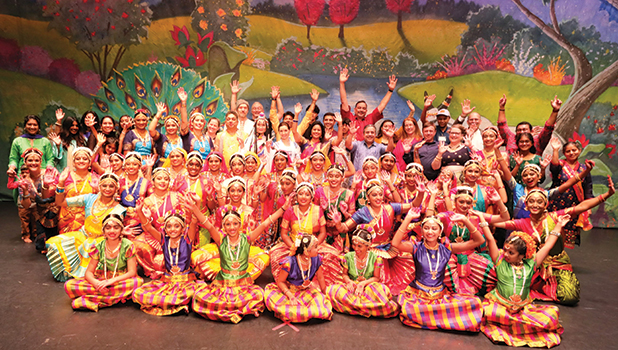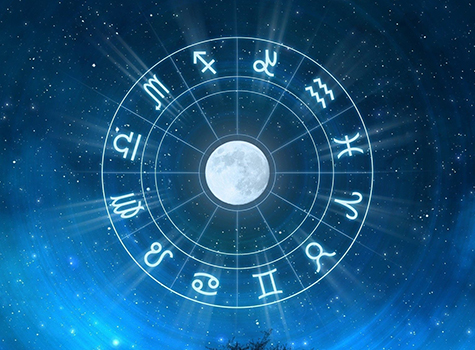By Dr. Maha Gingrich

When dance becomes an integral part of being human, it cannot be obliterated. The natural impulse to dance starts at birth. Before a child can speak, he or she attempts moves or dances to the music. Despite the efforts by many to minimize the importance of classical dances and those who see classical dances as an old tradition do not understand its ubiquity which implies a survival advantage.
According to Hinduism, Brahma, the creator and one of the Hindu Trinity, with the help of Goddess Saraswati, giver of higher learning and the arts, enlisted Bharatha Muni’s support in writing the fifth Veda, called Natyashastra. This is a book on drama, dance, and music.
It describes the setup of classical dance forms, including the jewelry, the building of the stages, the orchestra, the costumes of the dancers, meaning of hand gestures, facial expressions, positions of the feet and many more intricate details.
Classical dances were meant to become a guiding light. Through the medium of dance and music, human beings were to understand the concepts of good and evil, moral and immoral, and temporary and permanent.
Due to its divine origins, the earliest support to the art of dance came from temples, which were also the main area of communion between the commoners and the scholars. Local leaders supported the temples and were its patrons. The temples reverberated with devotion to the gods through elaborate rituals, part of which were also the twin arts of singing and dancing. Local patrons took pride in their temples and provided it with the best available talent. It was also a matter of honor for artists to be associated with service to God. A special class of dancers dedicated to God, deva (God) dasi (servant), came about whose accomplishments were respected and celebrated by many.
The kings and queens were not far behind in extending patronage to artists and they did much to support temples. Financial support and donation of land for temples helped these places of worship to thrive. Each temple was assured not only of local support from their zamindaars or leaders but royal patronage too, thus increasing the power and prestige of each temple and its resident dancers.
n 16th century, with the arrival of foreign powers in India, these dances experienced a huge setback. First, for trade and then for permanent stay and rule, these foreign rulers decreased the power of both local leaders and the royal courts.
This led to slow but sure decline in support to and patronage of temples, in turn leading to the decline of these religious art forms. The indigenous arts of India were looked down upon by colonialists and discouraged when Victorian civilization took over.
By the time, India attained independence from foreign rule in 1947, most temples and its inhabitants had been reduced to near destitution. In the absence of support, they had no means of sustaining these art forms. The British went further and created laws banning the practice of Devadasi system. Arts that had evolved and developed over centuries were reduced to nothing by the time India attained its independence.
It was during the struggle for independence and determination of several nationalists that the revival of Indian arts began. All over the country, from the beginning of the twentieth century, individuals tried to help save old dance forms. In the south, the spirit of resurgence led to the saving of Bharatha Natyam, Kathakali, Kuchipudi, and Mohiniattam. In the North, Kathak was revived, and in the Northeast, Manipuri. The pioneering gurus, dancers, and critics of the early twentieth century played a major role in helping save these dance forms.
After independence, several dance institutions and individuals took on the responsibility of serving the arts. The government by not interfering with the creative process established an atmosphere where dance forms could be nurtured.
By the end of the twentieth century, not only were these classical forms of dances fully revived and thriving, but the new generation of dancers were also looking at the latest trends and modernizing their traditions.
Even now, during these times of instant gratification, classical dances still help many young dancers replenish their inner selves. The confidence, beauty of self-respect and pride I see in my students by the time they complete arangetram (dance graduation) is irreversible. The gift of dancing given to me by my parents is now being passed on to the incoming generations. I see many of my students proudly presenting their talents beyond high school. Due to this dedication of both students and parents, we celebrated 20th anniversary of Dances of India this year and my dance academy completed its 83rd arangetram.
Just like humans, these beautiful classical dances have gone through many hardships and still survived. I applaud my gurus, organizations, and publications like Saathee Magazine that are providing means to keep these dance forms alive, allowing us to replenish our inner selves through dance.
For questions or comments, contact Dr. Maha Gingrich via email at [email protected]



